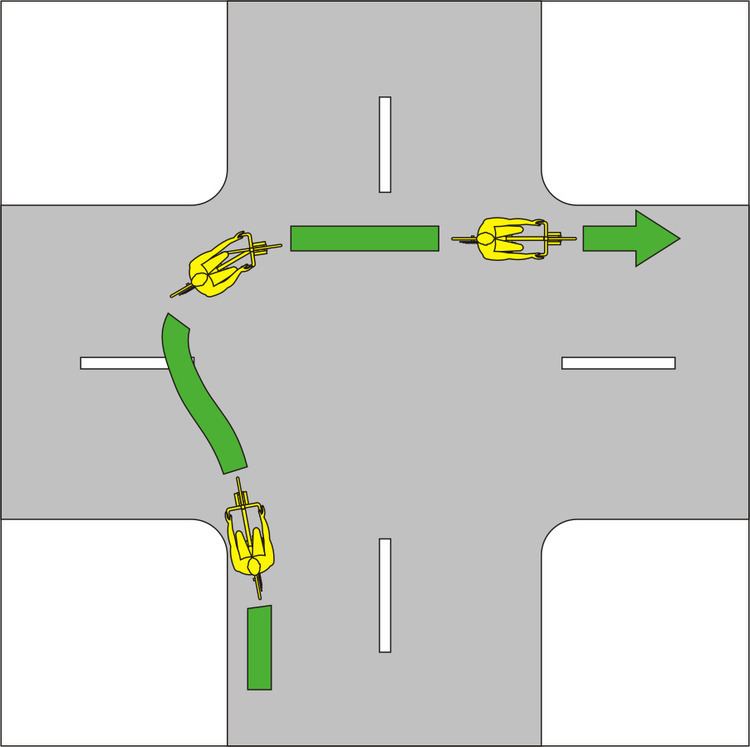 | ||
A hook turn (also known as a perimeter-style turn in Canada) is a road cycling maneuver and traffic-control mechanism in which vehicles that would normally turn from the closest lane of an intersection instead turn from the farthest lane, across all other lanes of traffic.
Contents
Hook turns are commonly used by cyclists as a safer alternative to merging with motor vehicles, or having to cross multiple lanes of traffic to reach a turning lane.
The legal use of hook turns by motor vehicles is relatively rare, but has been implemented in some jurisdictions (notably Melbourne, Australia) to keep the center of a road free from congestion for use by trams or other services.
Performing a hook turn
The Australian Road Rules set out the procedure for performing a hook turn in Australia, as well as other jurisdictions with left-hand traffic. In jurisdictions with right-hand traffic the lane of the turning vehicle is reversed.
- When the traffic light is green, the turning vehicle approaches and enters the intersection from as near as possible to the left. If there is insufficient room then it must wait for the next cycle of the lights.
- The vehicle moves forward, keeping clear of any marked foot crossing, until it is as near as possible to parallel with the left-most lane of the road the vehicle is entering.
- The vehicle remains at this position until the traffic lights on the road it is entering change to green.
- The vehicle then turns right into the road and continues straight ahead.
History and usage
In many jurisdictions lightweight vehicles, such as bicycles and mopeds, may make hook turns at any intersection regardless of signage. For instance, under the Australian Road Rules cyclists may legally perform a hook turn at any intersection unless otherwise signed.
Hook turns were originally the standard right turn in Australia. Various jurisdictions phased them out at different times. For example Melbourne, Australia changed to centre turns in 1954 for all right turns except for certain Central Business District intersections, in order to maintain a clearway in the center of major roads for the city's extensive tram network. Sydney, Australia and Newcastle, Australia changed to centre turns in 1939. By requiring vehicles to turn from the far lane, rather than the middle of the road, the hook turn was able to avoid conflicts between vehicles and trams without the need for extra traffic lanes or altered signals.
Hook turns have since been implemented in number of other jurisdictions, including Illinois, Beijing, Japan, Taiwan, Germany, Denmark, the Netherlands, and other States of Australia.
There have been limited proposals for hook turns to be implemented as a more widespread replacement for conventional intersection turns. Computer modelling has indicated that hook turns have the potential to significantly reduce delays and congestion in most scenarios, and especially where overall traffic flow is high.
In Denmark a hook turn is mandatory for bicycles.
